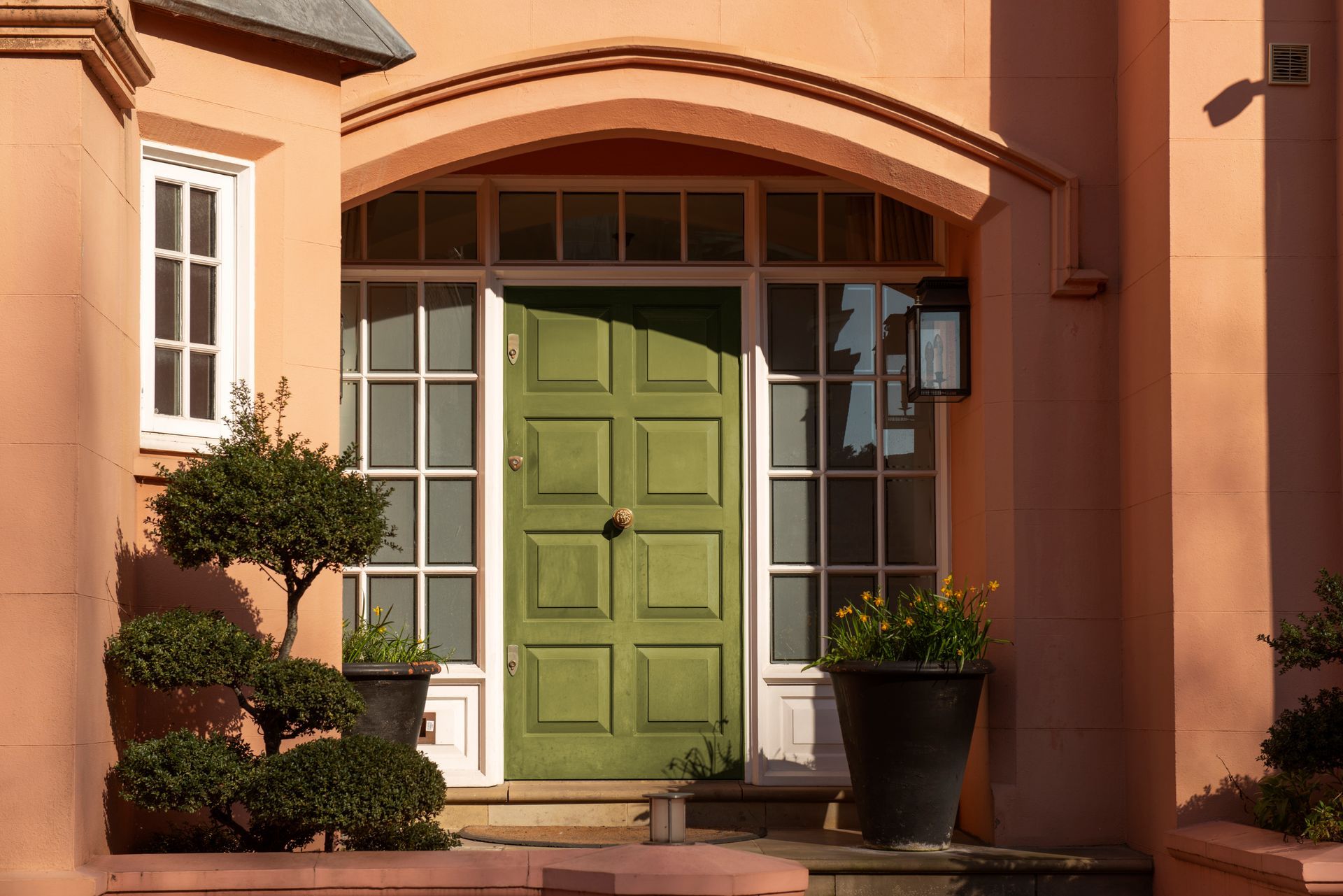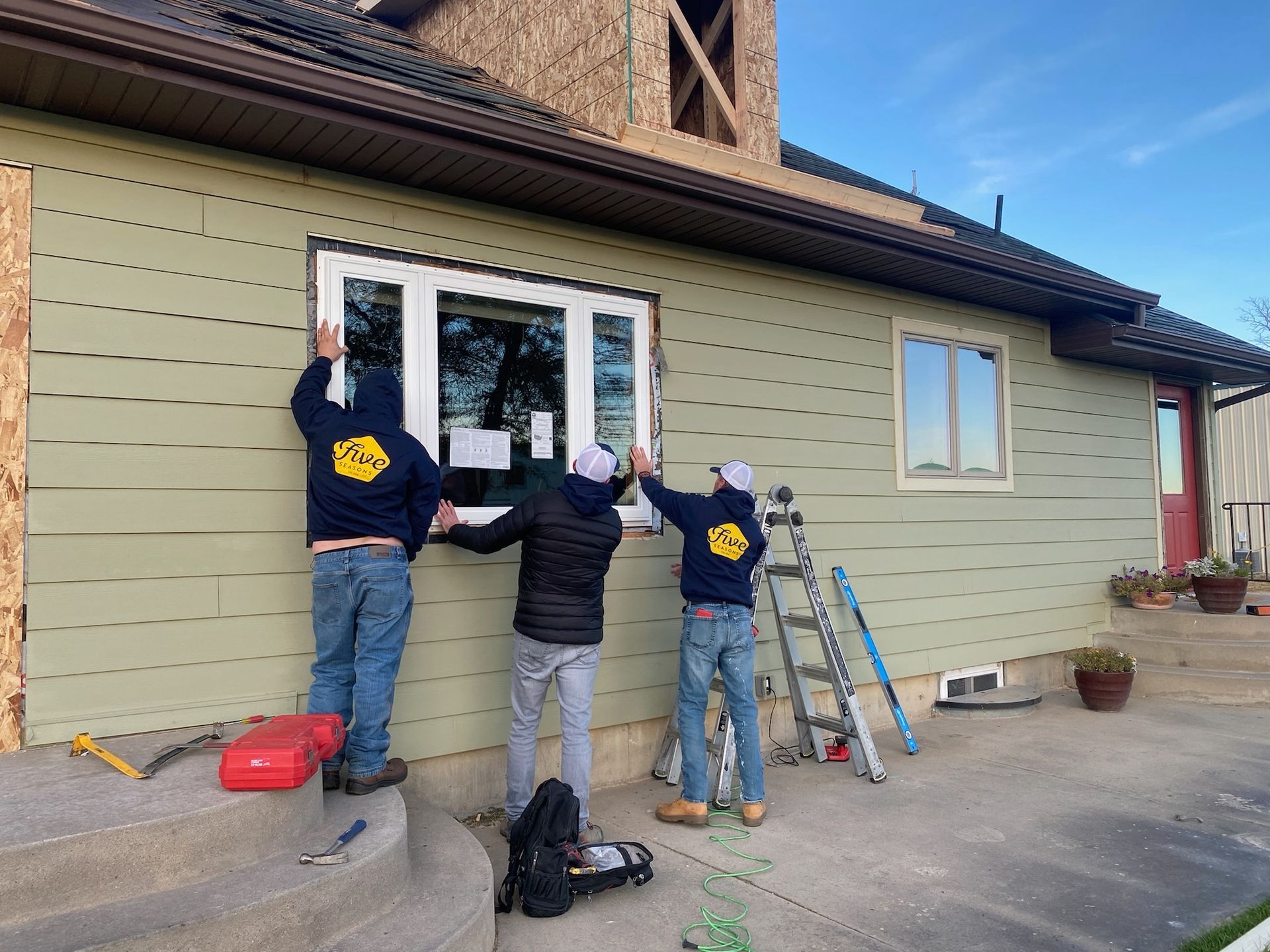Insulated entry doors are ideal for Colorado homes because they improve energy efficiency, reduce drafts, and withstand the state’s extreme temperature swings and elevation-related stress. According to the U.S. Department of Energy, up to 30% of energy loss can occur through poorly sealed doors and windows, making insulation critical in climates with high UV exposure and freeze-thaw cycles like Colorado’s.
Insulated entry doors are one of the most effective upgrades for Colorado homes. They reduce energy loss, help maintain indoor comfort, and withstand the state’s demanding climate conditions. Whether you're facing icy mornings in the Rockies or sun-drenched afternoons in the Front Range, an insulated door helps protect your home against drafts, temperature swings, and long-term wear. Well-designed entry doors can also improve curb appeal and raise perceived home value—making them a functional and aesthetic investment.
This guide breaks down what makes insulated doors different, why they matter in Colorado, and how to choose the right one.
What Are Insulated Entry Doors?
Insulated entry doors feature a core material designed to resist heat transfer. Most commonly, this includes high-density polyurethane foam encased within steel, fiberglass, or composite door skins. These materials provide a thermal barrier that keeps outside temperatures from affecting indoor conditions.
Unlike older hollow wood doors, modern insulated doors are engineered to prevent heat loss, resist condensation, and maintain structural integrity over time. Weatherstripping, insulated glass inserts, and multi-point locking systems further improve their performance.

Why Colorado Homes Need Better Insulation at the Entry
Colorado’s elevation and four-season climate place significant pressure on doors and other exterior surfaces. At higher altitudes, thinner air allows more heat to escape—and UV radiation can break down untreated materials faster than at sea level.
Homes in Colorado also face drastic temperature changes throughout the day and year, with dry air in winter and intense solar gain in summer. Entry doors are often a major source of heat loss, especially when paired with poor framing, aging seals, or outdated materials.
Upgrading to an insulated door helps eliminate these weak points and provides a tighter, more durable seal between your home and the outdoors.
For a closer look at how window insulation compares, explore the benefits of double vs. triple pane windows in Colorado homes.
Elevation and Door Performance in Colorado
Colorado’s elevation introduces unique challenges for building materials, and entry doors are no exception. Homes at higher altitudes—such as in Breckenridge, Evergreen, or Estes Park—experience lower atmospheric pressure and stronger UV exposure. These environmental conditions can cause traditional doors to warp, crack, or lose their seal effectiveness. Insulated entry doors made with fiberglass or steel cores are better suited to resist altitude-driven stress, especially when manufactured for high-elevation performance.
Key Benefits of Insulated Entry Doors in Colorado
● Energy Efficiency: An insulated core reduces heat loss in winter and blocks heat gain in summer, stabilizing indoor temperatures.
● Improved Comfort: Fewer drafts around your front entry mean fewer cold spots and more consistent warmth.
● Noise Reduction: Insulated doors also block exterior noise—ideal for homes near roads, schools, or high winds.
● Weather Resistance: Materials like fiberglass and steel hold up against UV damage, rain, and freezing temperatures.
● Security: Many insulated doors feature reinforced cores and upgraded locks, improving overall entry protection.
Material Comparison: Which Door Types Insulate Best?
● Steel Doors: Typically the most energy-efficient when paired with foam cores. Affordable and low-maintenance, though more susceptible to dents.
● Fiberglass Doors: Excellent thermal resistance and resistant to warping, cracking, and UV damage. Can mimic wood textures while offering modern performance.
● Wood Doors: Natural insulation is lower than steel or fiberglass. Requires regular maintenance in Colorado’s dry and variable climate.
● Composite Doors: Blend multiple materials for durability, performance, and visual appeal. Typically offer good insulation with less maintenance.
Air Sealing and Framing: Don’t Overlook the Installation
Even the most energy-efficient door can underperform if it’s not installed properly. Air leaks around the frame or thresholds reduce insulation effectiveness and lead to drafts—especially in Colorado’s dry winters and windy exposures. Look for professional installers who include tight weatherstripping, insulated jambs, threshold sealing, and foam insulation around the frame. A precision installation ensures that your entry door works as a true thermal barrier, not just a decorative feature.
Matching Style With Performance: Colorado Architecture Tips
From mountain-modern homes and craftsman bungalows to classic ranch-style builds, Colorado’s architectural diversity gives homeowners flexibility—but also creates design challenges. Fortunately, insulated entry doors come in a wide variety of finishes and styles. Fiberglass doors can replicate the warmth of wood grain while delivering better thermal efficiency, and steel doors offer clean, contemporary lines. Choose UV-resistant finishes and deeper earth tones that can withstand Colorado’s sun exposure while enhancing curb appeal and resale value.
How Entry Doors Affect Home Value and Appearance
Your entry door is one of the first things visitors and appraisers notice. A modern, well-insulated door signals quality, energy efficiency, and care. Homes with upgraded entries often see improvements in curb appeal, security perception, and even resale value—especially in competitive neighborhoods like Boulder, Highlands Ranch, and Fort Collins.
Today’s market expects homes to be energy efficient, and replacing an aging wood or hollow metal door with an insulated upgrade aligns with that expectation.
People Also Ask About Insulated Entry Doors in Colorado
Do insulated doors really make a difference in Colorado?
Yes, they do—especially in Colorado’s diverse climate. Insulated entry doors help reduce drafts, stabilize indoor temperatures, and prevent heat loss through one of the most vulnerable parts of a home. In mountain towns and high-wind zones, they also help prevent air leakage, which can otherwise lead to discomfort and higher energy costs. For homes with older wooden or hollow-core doors, the difference is especially noticeable during winter and summer extremes.
Are fiberglass or steel doors better for cold climates?
Both fiberglass and steel doors perform well in cold climates, but fiberglass often provides the best balance of insulation, appearance, and durability for Colorado homes. Fiberglass doors won’t warp or rust, and many are filled with dense polyurethane foam that insulates better than solid wood. Steel doors are more durable against impact and offer excellent energy efficiency but may feel colder to the touch and require protective finishes to avoid surface corrosion in extreme conditions.
How long do insulated doors last?
A high-quality insulated entry door can last 20 to 30 years or more with proper maintenance. Fiberglass and steel doors are known for their longevity, especially when exposed to Colorado’s dry air, UV intensity, and freeze-thaw cycles. Key factors that influence longevity include the quality of the core insulation, durability of the exterior material, and the integrity of weatherstripping and seals. Regular inspections and refinishing (when applicable) help maximize lifespan.
Can insulated doors help with noise?
Yes. Insulated entry doors provide meaningful sound reduction, particularly when paired with solid framing and tight weatherstripping. This makes them beneficial for homes near busy streets, schools, or high-wind areas. Fiberglass and steel doors filled with dense foam can significantly reduce street noise compared to hollow or older wood slab doors. While they don’t eliminate sound entirely, they do contribute to a quieter, more peaceful interior environment.
Is it worth upgrading an old wooden door?
In most cases, yes—especially in Colorado. Older wooden doors tend to warp, crack, or shrink in Colorado’s dry climate, leading to drafts and inefficiency. While solid wood offers aesthetic charm, it often underperforms compared to insulated fiberglass or steel options. Upgrading to an insulated door not only improves comfort and energy performance but also enhances security and curb appeal, particularly if the door is decades old or lacks proper sealing.
Our Take: Choosing the Right Door for Colorado Homes
If you’re building or renovating in Colorado, investing in an insulated entry door should be a top priority. Whether you’re in the mountains, the city, or the plains, your front door takes the brunt of environmental exposure year-round.
Choose a door that balances insulation, durability, appearance, and fit. Consider fiberglass or composite for their longevity, or steel for budget-friendly insulation. Don’t forget to pair the slab with quality framing and weatherstripping to maximize performance.

Conclusion: Comfort, Efficiency, and Style—Built for Colorado
Insulated entry doors are more than just a home upgrade—they’re a smart response to Colorado’s unique climate. With the right door, you’ll enjoy lower utility bills, greater comfort, and a better-looking home exterior.
Whether you're replacing an aging door or designing your dream entryway, choose insulation and performance that match your lifestyle and your environment.
Get Started Today
Five Seasons Windows & Doors is Colorado’s top-rated local window company with 230+ 5-star reviews. We offer expert advice, no-pressure quotes, and flexible project options — including phased installs. Schedule your consult today.



